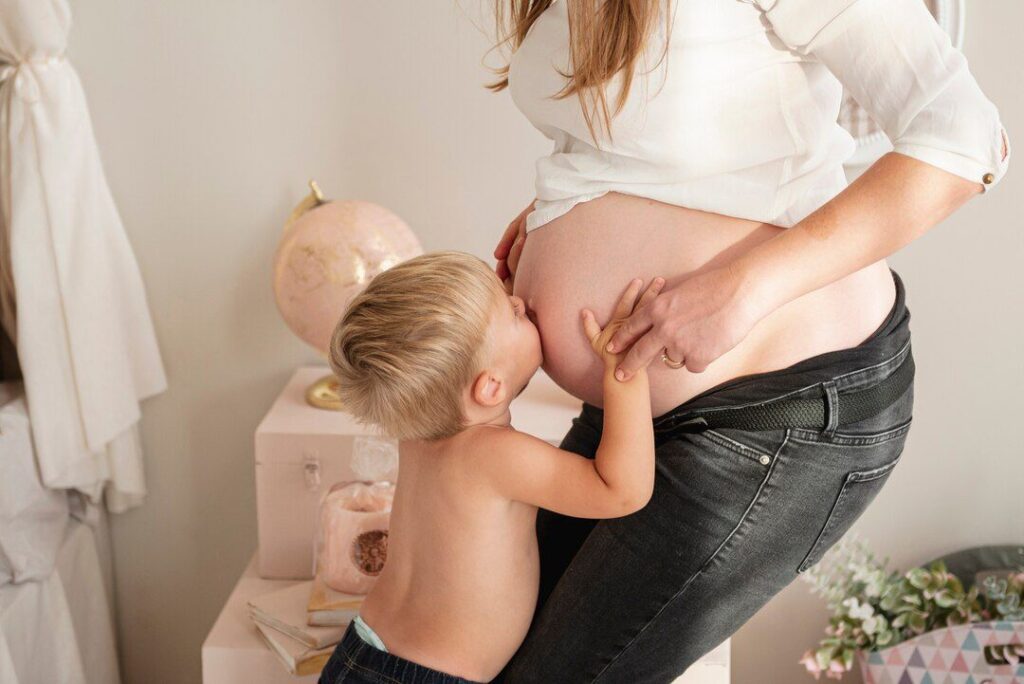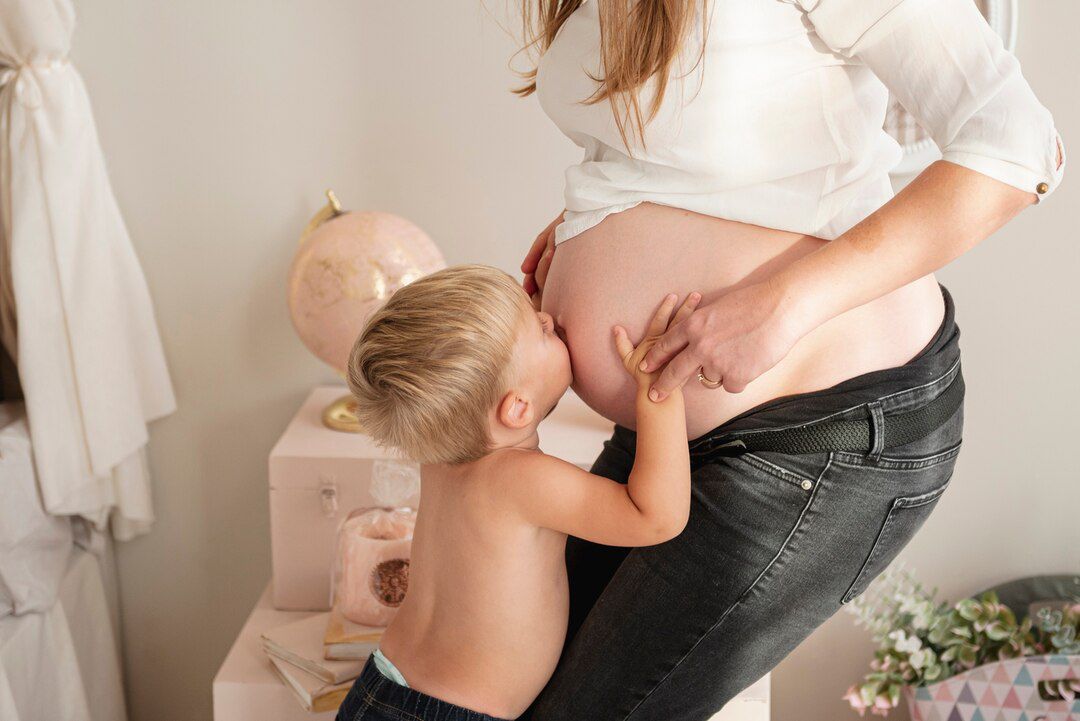Discover the length of the postpartum period and how the healing process unfolds after childbirth. Learn what to expect during recovery and tips for supporting your body.
The postpartum period, often referred to as the fourth trimester, is a time of profound physical and emotional change as your body heals and adjusts after childbirth. For new mothers, this can be a challenging phase marked by fatigue, hormonal shifts, and learning to care for a newborn.
While childbirth itself may be over, the recovery process is just beginning. Many women wonder: How long is the postpartum period? The answer isn’t always simple, as postpartum recovery can vary greatly from one woman to another. Generally speaking, the postpartum period lasts up to six weeks, but full recovery—both physically and emotionally—can take much longer.
This article aims to provide a comprehensive guide to the postpartum period, including the physical healing process, emotional adjustments, and tips to support your recovery. By understanding the different phases of postpartum, you can better navigate this important time.
What is the Postpartum Period?

The postpartum period is the time following childbirth during which your body heals and returns to its pre-pregnancy state. This phase begins immediately after delivery and encompasses a variety of physical, emotional, and psychological changes.
Immediate Postpartum (First 24 Hours)
Immediately after giving birth, your body begins the process of healing and recovery. The first 24 hours are critical for monitoring any potential complications, such as postpartum hemorrhage or infection. During this time, medical professionals will monitor your vital signs and ensure that your uterus is contracting properly to prevent excessive bleeding.
Early Postpartum (First 6 Weeks)
The first six weeks are often considered the most intense phase of the postpartum period. During this time, your body undergoes significant changes, including:
- Uterine involution: The uterus gradually shrinks back to its pre-pregnancy size.
- Lochia: Postpartum bleeding, known as lochia, can last for several weeks and transitions from bright red to lighter shades as time goes on.
- Breast changes: Whether you’re breastfeeding or not, your breasts will produce milk, which can lead to engorgement or discomfort.
- Perineal healing: If you experienced a vaginal tear or episiotomy during childbirth, this area will begin to heal over the first few weeks.
How Long Does the Postpartum Period Last?
While many refer to the postpartum period as the first six weeks after birth, it’s important to recognize that the timeline for postpartum recovery can extend far beyond that. The reality is, recovery after childbirth is a unique process, and some women may experience symptoms or physical challenges for months after giving birth.
The First Six Weeks
The first six weeks postpartum are generally considered the most intense period of recovery. During this time, your body is healing from the physical trauma of childbirth, and you may also be navigating significant emotional changes. If you had a C-section, the recovery time might be longer due to the surgical nature of the delivery.
For vaginal deliveries, six weeks is typically the time frame for your uterus to return to its normal size, for stitches to heal, and for most women to resume daily activities. However, it’s essential to rest and listen to your body, as pushing yourself too hard can lead to complications.
Three to Six Months Postpartum
Although many women feel more physically healed by three months postpartum, full recovery may take longer. For some women, this is the time when they may still be dealing with issues like pelvic floor dysfunction, urinary incontinence, or persistent back pain.
During this time, the body continues to adjust to new hormonal levels, which can impact energy levels, mood, and breastfeeding.
Up to a Year Postpartum
It’s important to recognize that some aspects of postpartum recovery may take up to a year or longer. This includes not only physical healing but also emotional and psychological recovery. Postpartum depression, anxiety, or other mental health challenges may persist well beyond the first few months after childbirth. Hormonal fluctuations can affect mood, and the demands of caring for a newborn can lead to ongoing stress.
Physical Recovery After Birth: What to Expect
The physical recovery from childbirth can be divided into several key stages, each with its own set of challenges and milestones. Understanding these stages can help you anticipate what to expect and how to care for your body during each phase.
1. Uterine Involution
One of the most important aspects of postpartum recovery is uterine involution, which is the process of your uterus returning to its pre-pregnancy size. This process typically takes six to eight weeks and is accompanied by cramping or afterpains, especially during breastfeeding.
2. Postpartum Bleeding (Lochia)
Lochia is the vaginal discharge that occurs after birth as your body sheds the extra blood and tissue used to support the pregnancy. Lochia can last for up to six weeks and gradually transitions from bright red to pale pink or yellowish-white over time.
3. Perineal Healing
If you experienced a vaginal tear or had an episiotomy during childbirth, the healing process for your perineal area can take several weeks. It’s essential to follow your healthcare provider’s instructions for keeping the area clean and avoiding infection.
4. C-Section Recovery
For women who had a C-section, the recovery process is different than for vaginal births. C-section recovery involves healing from major abdominal surgery, which means you may need more time before resuming normal activities. Scar care, pain management, and avoiding heavy lifting are critical during the first few weeks.
Emotional and Mental Health in the Postpartum Period
The emotional and psychological recovery after childbirth is just as important as the physical healing process. Many women experience mood swings, anxiety, or feelings of sadness in the weeks following delivery, often referred to as the baby blues.
Postpartum Depression
For some women, emotional challenges extend beyond the baby blues and develop into postpartum depression. This condition can occur anytime within the first year after childbirth and includes symptoms like persistent sadness, feelings of hopelessness, and difficulty bonding with the baby.
It’s essential to recognize the signs of postpartum depression and seek help if needed. Mental health is a critical part of postpartum recovery, and early intervention can make a significant difference in your overall well-being.
Tips for Supporting Your Postpartum Recovery
Recovery after childbirth is a gradual process that requires patience and self-care. Here are some key tips to help you navigate the postpartum period:
1. Rest as Much as Possible
Getting adequate rest is essential for healing. Take advantage of any help offered by family or friends to rest and recover, especially in the first few weeks after birth.
2. Stay Hydrated and Eat Nutritious Foods
Proper nutrition is crucial for postpartum recovery. Eating a balanced diet rich in iron, vitamins, and proteins will support your body’s healing process, especially if you’re breastfeeding.
3. Gentle Exercise
Once you’ve been cleared by your doctor, gentle exercises like walking or pelvic floor exercises can help strengthen your body and promote healing. Avoid intense workouts until you’ve fully recovered.
4. Ask for Help
Don’t hesitate to ask for help, whether it’s with housework, baby care, or simply taking some time for yourself. Accepting support is vital for both your physical and mental recovery.
Internal Links for Further Reading
For more information about the postpartum experience and related topics, check out these helpful internal resources:
- Postpartum Symptoms: Learn about common postpartum symptoms and how to manage them.
- Pregnancy Symptoms: A deeper dive into the symptoms that occur during pregnancy.
- Pregnancy Testing: Find out when and how to take a pregnancy test for accurate results.
External Links for Further Reading
- March of Dimes – Postpartum Care: Tips and advice on caring for yourself after childbirth (March of Dimes).
- Mayo Clinic – Postpartum Recovery: Information on what to expect during the postpartum period (Mayo Clinic Postpartum Recovery).
- Cleveland Clinic – Postpartum Healing: A comprehensive guide to the postpartum healing process (Cleveland Clinic).
Conclusion
The postpartum period is a critical time for both physical and emotional recovery after childbirth. While the initial six weeks are often the most intense phase of healing, it’s important to recognize that postpartum recovery can take much longer—sometimes up to a year or more. Every woman’s experience is unique, and factors such as the type of delivery, personal health, and emotional well-being all play a role in how long the recovery process will take.
Understanding the timeline of postpartum recovery, from the early weeks of uterine involution and perineal healing to the longer-term emotional adjustments, can help you navigate this period with greater ease. Remember to prioritize rest, seek support when needed, and reach out to your healthcare provider if you have any concerns about your recovery.
With time, patience, and self-care, you’ll emerge from the postpartum period feeling stronger and more confident in your new role as a mother.
